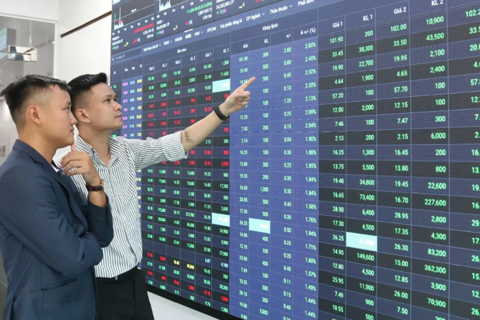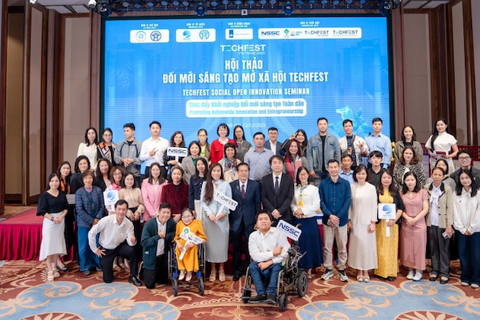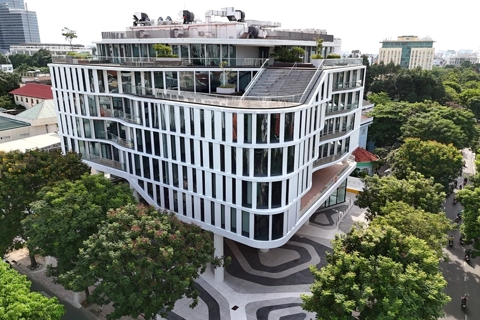Vietnam targets US$20 billion trade turnover with Latin America
Vietnam has established trading activities with all 33 countries in the region, with two-way trade turnover rising over 63-fold from $245 million in 2000 to $15.6 billion in 2020.
Vietnam expects to take the bilateral trade turnover with Latin America to US$20 billion by 2025 and attract $12-13 billion in investment capital from the region.
| Cargo handling at Haiphong Port: Photo: Pham Hung |
Vice Minister of Industry and Trade Do Thang Hai stressed the view at the Vietnam-Latin America Trade Forum 2021 held on December 9.
According to Thang, trade relations between Vietnam and Latin America have been progressing strongly over the years.
To date, Vietnam has established trading activities with all 33 countries in the region, with two-way trade turnover rising over 63-fold from $245 million in 2000 to $15.6 billion in 2020. Of the total, Vietnam’s exports to Latin America amounted to $8.25 billion, and imports reached $7.33 billion.
To further trade-economic cooperation with Latin America, Thang noted Vietnam has signed a number of trade agreements with countries in the region, including a free trade agreement (FTA) with Chile, Cuba, and the CPTPP that includes Chile, Peru, and Mexico.
“In addition, the Vietnamese Government is negotiating a similar trade deal with the Mercosur [economic and political bloc comprising Argentina, Brazil, Paraguay, Uruguay, and Venezuela], in turn placing Vietnamese products in favorable conditions to access a huge potential market of over 360 million people,” Hai said.
Meanwhile, Vietnam has been maintaining cooperation mechanisms with countries in Latin America, including inter-governmental committees or joint commissions on trade, economic, and investment cooperation with Argentina, Brazil, Chile, Cuba, Haiti, Mexico, Panama, Paraguay, Peru, Uruguay, and Venezuela.
“Given the strong and long-standing relations, Vietnam and Latin American countries are getting closer to expanding a comprehensive partnership, especially in economy, trade, and investment,” Hai continued.
Mexico’s Minister of Economy and the current Chairwoman of the Community of Latin American and Caribbean States (CELAC) Tatiana Clouthier added the CPTPP has laid the foundation for greater trade relations between Vietnam and Mexico.
Clouthier noted Mexico is seeking further cooperation with Vietnam to form a production hub as part of the global supply chain in North America and Southeast Asia.
She noted the country encourages Vietnamese companies to take part in Mexican value chains, along with investing in potential fields such as electronic vehicles and products, or the space industry.
Challenges still persist
In contrast to favorable conditions, the two business communities are facing great challenges, especially in the long geographical distance and unavailability of direct flight routes, which result in high logistics costs.
Do Thi Dao, a company providing logistics service for the Latin American market, noted differences in languages, and the lack of information on market and customer behaviors also hinder enterprises from two sides to engage in business activities.
“Covid-19 and the return of protectionism in the past years are sources for concern,” Dao said.
She said the average travel time from Vietnam to Latin America previously took 30 days, but under the current pandemic situation, it takes 50-60 days to reach the Western Hemisphere.
“The issue is particularly significant as the majority of Vietnam’s exports to the region are farm produce, for which short travel time is essential to ensure high quality,” Dao suggested.
According to Vice Director of the Import-Export Department under the Ministry of Industry and Trade (MoIT) Nguyen Cam Trang, Vietnamese businesses are not being able to fully take advantage of preferential treatments from the CPTPP, especially in the rules of origin.
“Businesses should be proactive in learning about the trade deal in terms of tariff or rules of origin,” Trang added.
In this regard, Vice Minister Hai said the Government and MoIT are committed to supporting Vietnamese firms to get updated information on Latin American markets via the network of trade offices so that they have a better chance of penetrating the market.

.jpeg)










